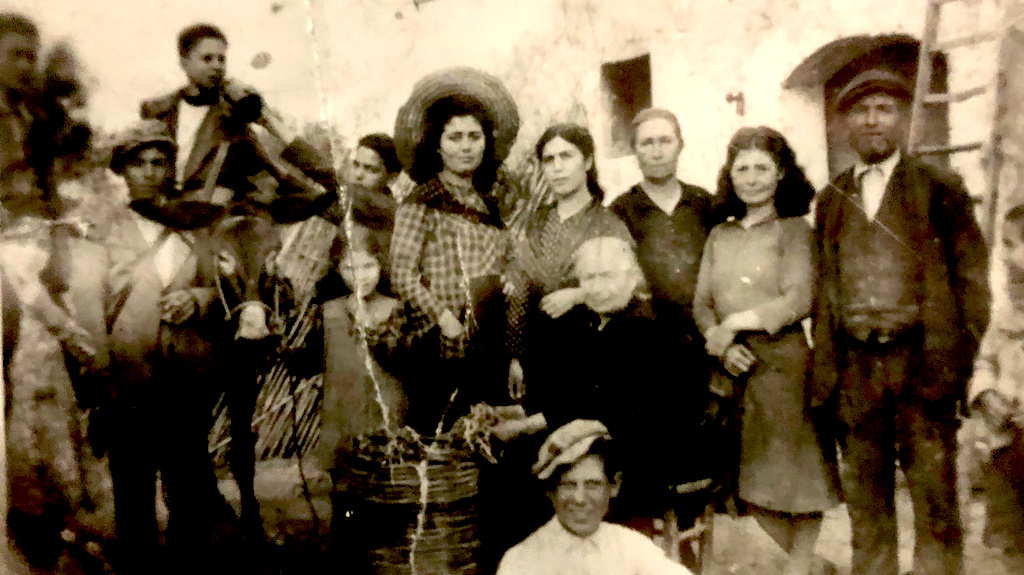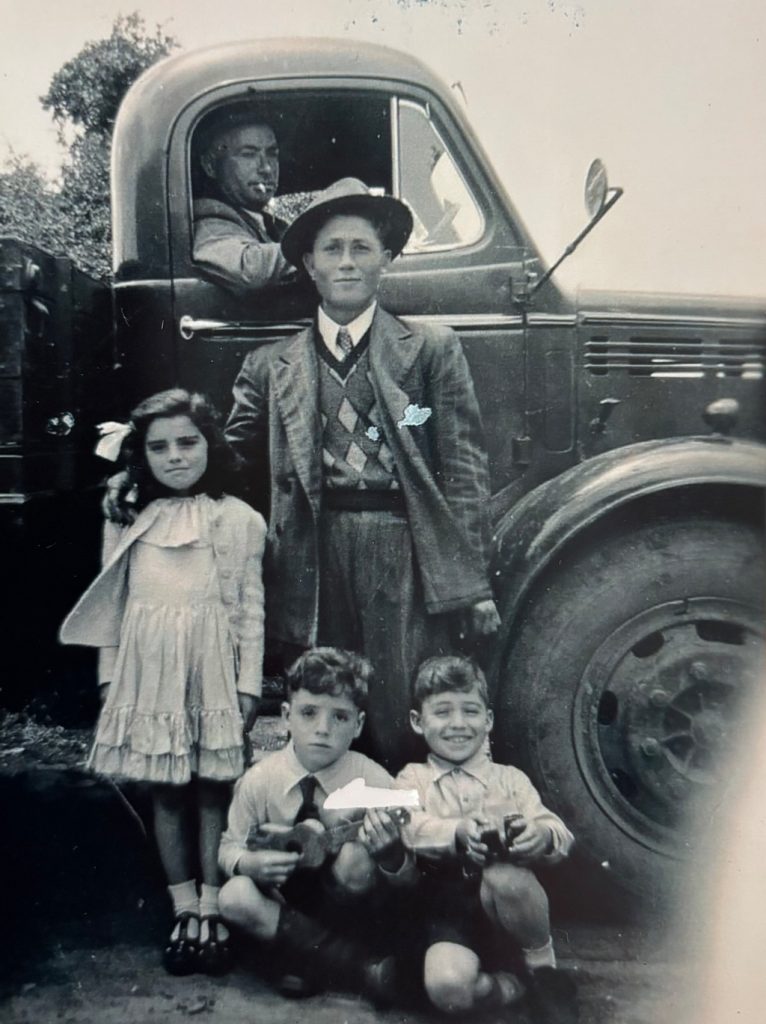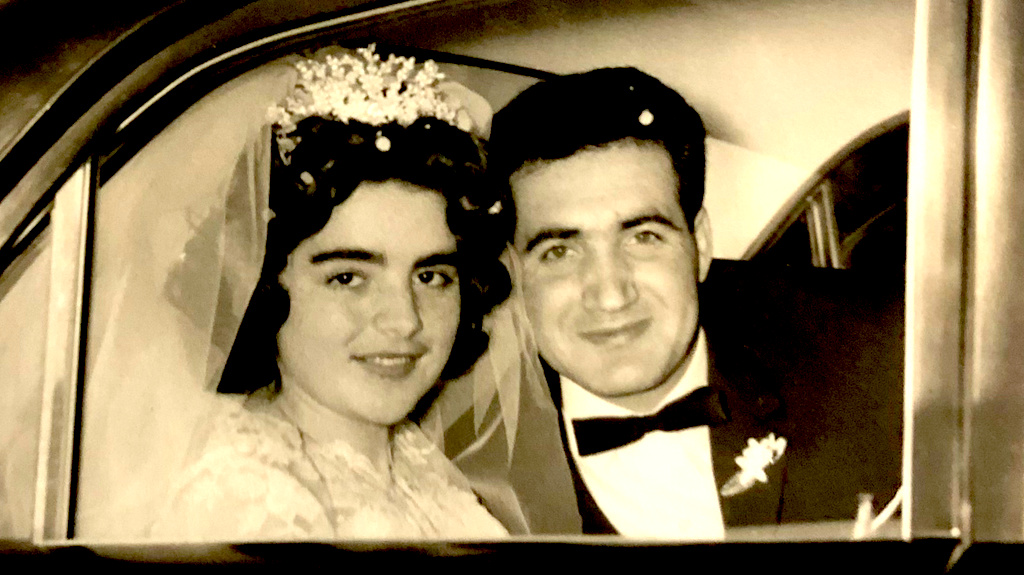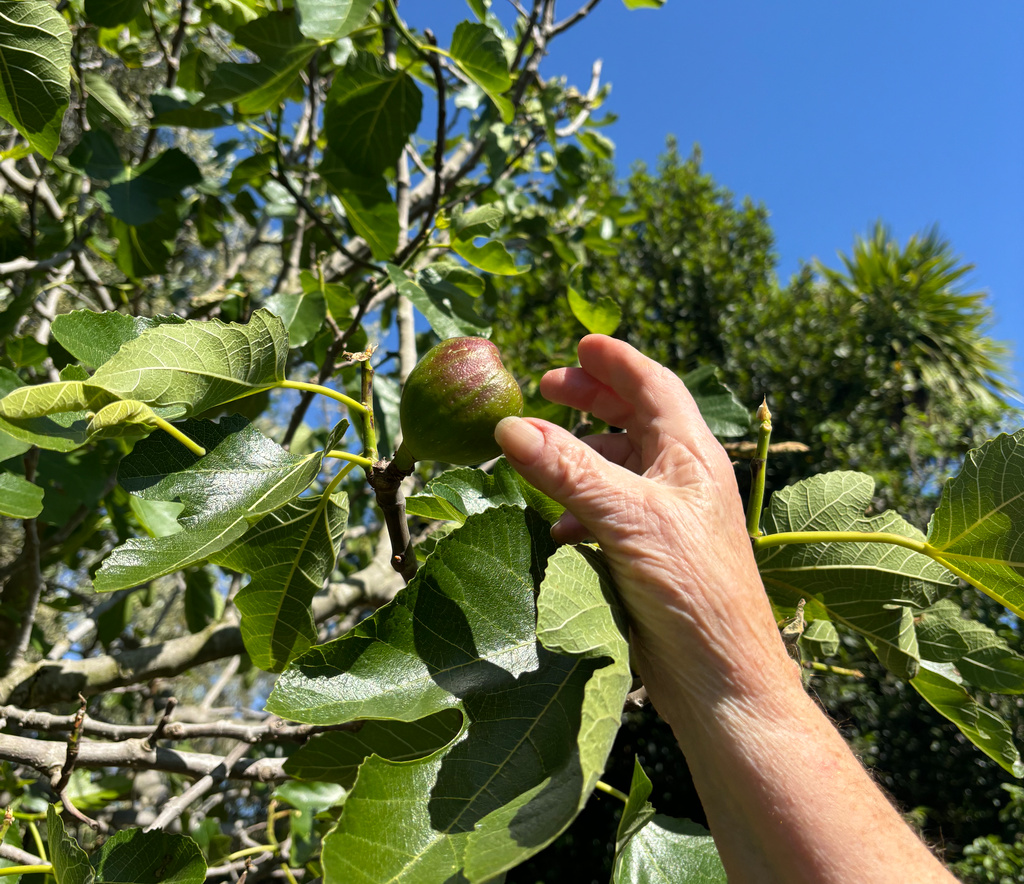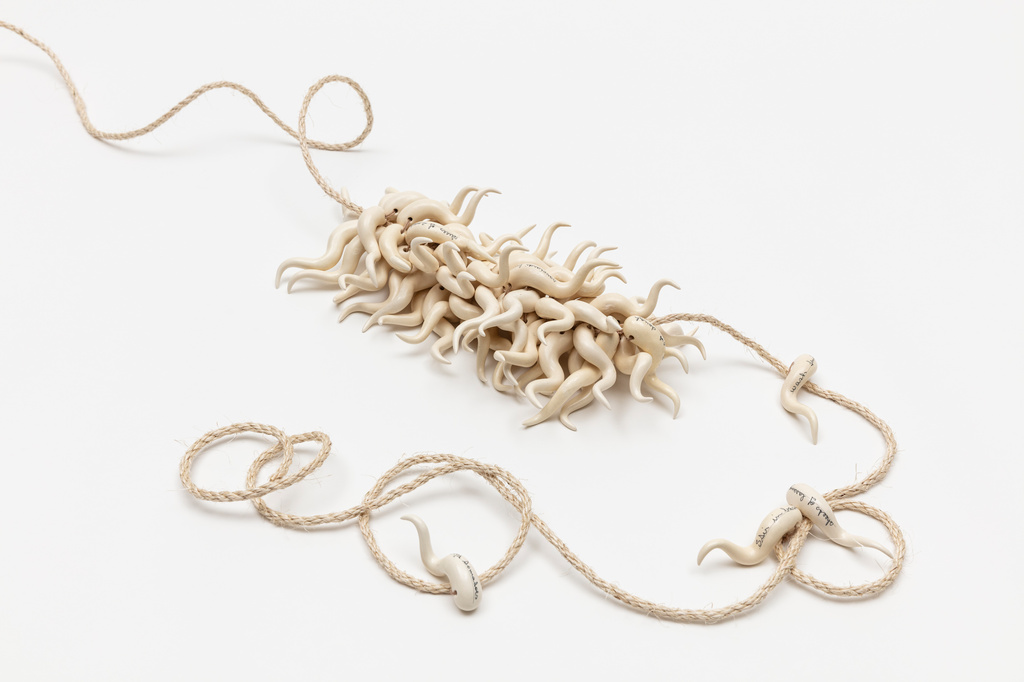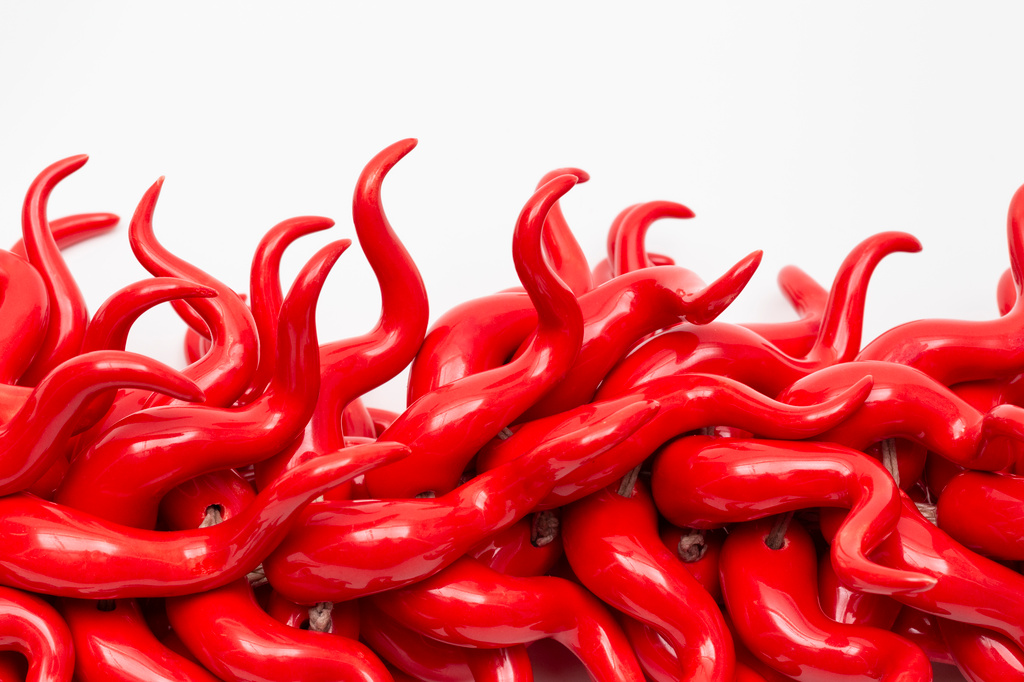
Celine Babet, ‘Nonna’s Abundant Protection from the Mallochio’, 2024, ceramic, glaze, wax string and sisal rope, dimensions: (18x6x6cm), photo: Janelle Low
Celine Babet recreates the cornicello protection charm of her Sicilian ancestors in vibrant ceramic clusters.
I find inspiration for my work through my lived experiences, often reflecting on childhood. My upbringing included a lot of time spent with my Nonna. I distinctly remember standing on a stool, unable to reach the kitchen bench without it, as Nonna would show me how to make our family meals. It was not as simple as following the recipes, I would watch Nonna carefully as she would pick up a handful of flour and say, “About this much”. I recall my two little hands trying to pick up the same amount of flour she did with one. To this day, I wonder if I will be able to replicate her food. Instead, I watch my mother at home make the same recipes and take notes, in the hopes that one day I will have it just as they do.
As I step into Nonna’s home today, I am filled with nostalgia. The sound of the coffee pot bubbling over, the soft noise of the radio in the kitchen or Nonno’s old Italian records echoing from the lounge room. The smell of the sugo cooking on a Sunday morning, or fresh lemons plucked from Nonna’s tree. All these things instantly take me back to childhood. This strong connection to culture and family has significantly influenced who I am today. Participating in traditions and embracing cultural beliefs that have been passed down in my family over generations creates a bridge to my ancestors. This unique connection to those I have never met inspires me as I examine through my work how family traditions and cultural beliefs can form one’s identity.
Cultural identity
- Nonno’s family back in Licodia, Sicily
- Nonna and her brothers on her fathers farm
- Nunna and her father
- Nonna and Nonno married in Australia
- Nonna in her kitchen making pasta
- Nonna picking a fig from her tree
Our beliefs and traditions are of great importance to my family, as they connect us to our ancestry. Over time, much of our culture has been lost or altered in the effort to assimilate into Australian society. My Nonna, born in Melbourne, lived two different lives: one as Mary at school, where she spoke English, and another as Maria at home, speaking Sicilian dialect with her parents. The same happened with my mother, who decided being Anne Marie was easier than being Anna Maria — a part of her that was reserved for home. I didn’t fully realise how much my family had to adapt to fit in until my Nonna spoke of her sister, Vincenza, whom I always called Zia Louise—completely changing her name and identity, because no one could be bothered to pronounce Vincenza. To the point where her own family began to know her only by the name a teacher gave her in school, not by the name her mother gave her at birth.
My Nonna is the last of our ancestry to speak Sicilian, being told she doesn’t “speak proper Italian”. Even within the Italian community in Australia, my family had to assimilate one way or another. I’ve started to understand why these family recipes and beliefs hold such significance — they are the one thing we can cling to, to keep our traditions, part of our identity, alive.
The cornicello
Cornicellos have existed for centuries, having a lasting impact on Italian culture. The horn-shaped talisman, believed to offer protection against bad luck, has been carried down through generations. This belief system is one I hold dear and live by every day. I wear the symbol around my neck to ward off any negative energy someone might pass onto me. The phrase “you’ve got the mallochio” was often heard during family conversations whenever one was talking about experiencing headaches. “Mallochio” is a Sicilian term for bad luck, and headaches are believed to be a sign someone has wished poorly for you or is jealous of you, and therefore has cursed you.
My great Nonna had all different types of remedies, including placing a plate with water on top of your head and pouring olive oil onto it, while speaking in Sicilian to “rid you of the mallochio”. While I feel deeply connected to this belief, I cannot say I follow these methods. Instead, I continue to wear my cornicello necklace hoping that bad luck never finds me or that it eventually disappears.
My cornicello necklace was gifted to me by my Nonna, as it is bad luck to buy one for yourself.
My cornicello necklace was gifted to me by my Nonna, as it is bad luck to buy one for yourself. While it used to be hard to find cornicello jewellery, it has become heavily commercialised recently. However, none of the fast fashion brands understand the true meaning of the horn symbol. My family has always purchased from Italian jewellers in Melbourne, as they are the best cornicello charms you can find. Anyone can wear or own a cornicello. I often buy them as key chains or make them as gifts for my friends.
Nonna’s Abundant Protection from the Malocchio
- Celine Babet, ‘Nonna’s Abundant Protection from the Mallochio’, 2024, ceramic, glaze, wax string and sisal rope, dimensions: (18x6x6cm), photo: Janelle Low
- Celine Babet, ‘Nonna’s Abundant Protection from the Mallochio’, 2024, ceramic, glaze, wax string and sisal rope, dimensions: (18x6x6cm), photo: Janelle Low
- Celine Babet, ‘Nonna’s Abundant Protection from the Mallochio’, 2024, ceramic, glaze, wax string and sisal rope, dimensions: (18x6x6cm), photo: Janelle Low
My work ‘Nonna’s Abundant Protection from the Malocchio’ depicts the cornicello symbol in abundance as hanging chillies. Due to its similar shape and colour, the cornicello symbol is frequently mistaken for a chilli form. This sparked the idea of incorporating the two to create a new form with new meanings. The bright red shade is not only a visual link to chillies but also a nod to traditional depictions of cornicellos.
While one of my forms is a hanging piece, the other is laid, “In the process of being strung.” These cornicellos are not like traditional depictions; instead, they are a creamy white shade to display an old tradition carried on by the new generation. The piece is “unfinished,” with some cornicellos bunched and the others piled to demonstrate how it is an ongoing belief. The juxtaposition between the strung and the unstrung, the old and the new, tells a narrative of continuing cultural beliefs.
Further exploring cultural traditions, I wanted to incorporate an element into my work demonstrating my connection with family. Our recipes have been passed down for decades, my Nonna having learnt them through her mother. Being able to learn these recipes also allows me to keep these traditions alive. Nonna’s handwritten words from her cookbook are placed on white cornicellos as a nod to our close relationship. It also demonstrates how these recipes have been carried down within my family, just as the cornicello symbol has. Both these things are sacred.
About Celine Babet
 Celine Babet is an emerging ceramic artist whose work draws on her heritage and experiences growing up immersed in Italian culture. She explores the continuation of cultural traditions, century-old beliefs, and their influence on shaping identity, while forging a connection to her ancestors. Her practice reveals strong themes of family, childhood, and nostalgia, with Italian symbolism reinterpreted in contemporary contexts to create new meanings. Completing a Bachelor of Arts (Fine Arts) at RMIT University, she is continuing her practice in Naarm/Melbourne.
Celine Babet is an emerging ceramic artist whose work draws on her heritage and experiences growing up immersed in Italian culture. She explores the continuation of cultural traditions, century-old beliefs, and their influence on shaping identity, while forging a connection to her ancestors. Her practice reveals strong themes of family, childhood, and nostalgia, with Italian symbolism reinterpreted in contemporary contexts to create new meanings. Completing a Bachelor of Arts (Fine Arts) at RMIT University, she is continuing her practice in Naarm/Melbourne.
Celine Babet was awarded the Garland Prize for Innovative Storied Object in 2024.

